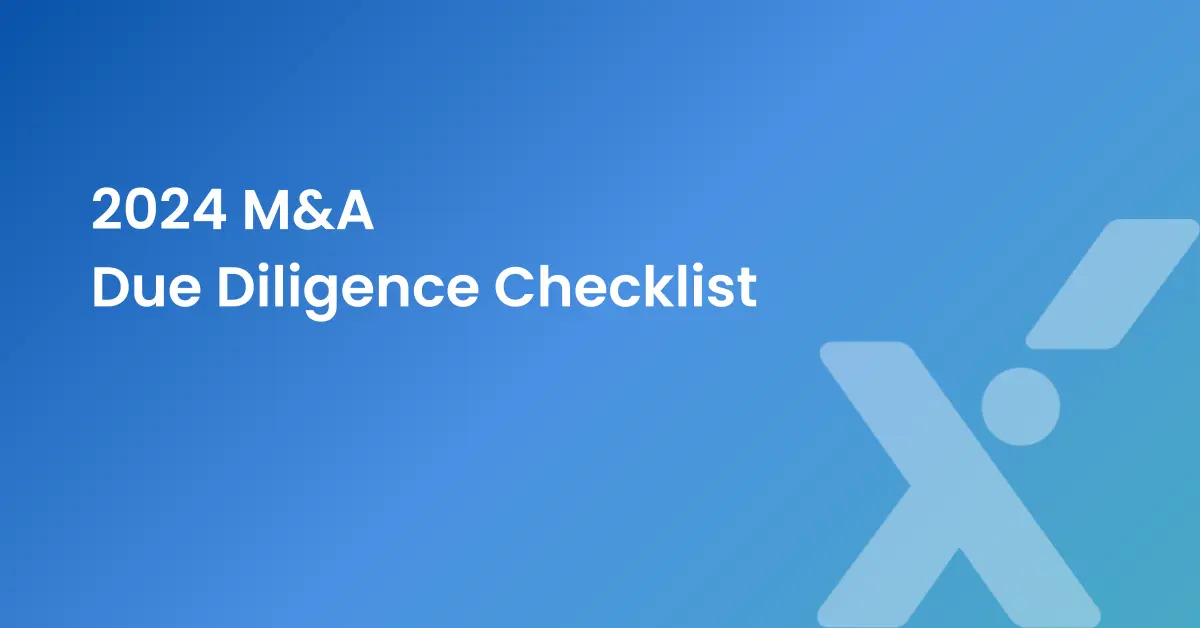We get it, tackling due diligence during an M&A transaction is an overwhelming task, but essential for closing a successful, equitable and efficient deal.
In this article, we will explore key due diligence processes that you must have and how technology and an AI deal sourcing platform are revolutionizing the process empowering dealmakers to maximize the benefits from deal origination due diligence through to completion.
Why Have a Due Diligence Checklist?
The primary cause of M&A failures or under performance of an acquisition can often stems from the absence of a thorough research or due diligence as a part of formulating the M&A strategy. Due diligence begins with a broad understanding or the competitive landscape which happens well before comprehending the potential synergies and scalability of businesses post-merger or acquisition.
Step one involves identifying the niches or the right potential acquisition target that addresses the strategic requirements of the company. This begins with setting clear objectives or business purpose from both an operational and financial perspective, and an analysis of all of the potential targets that can address the company’s strategic needs.
After narrowing the field of potential candidates, step two involves identifying the internal and external risk factors that will make the acquisition successful, this can include: market expansion or entering new markets, profitability drivers, or access to patents. Effective scenario planning can provide more insightful information than mere balance sheets.
Challenges in M&A Due Diligence
Conducting a comprehensive company evaluation is very complex task, one that often exceeds the capabilities of individuals assigned to conduct the due diligence especially if they do not have a lot of industry experience. Some of the common challenges include:
- Uncertainty about the right questions to ask.
- Not being able to identify the true risks or potential opportunities.
- Lack of expertise, necessitating the hiring of experts taking time and resources.
- Ineffective communication leading to impatience and friction with the seller.
M&A Due Diligence Checklist
Once the right target is identified, successful M&A due diligence involves gaining a deep understanding of the seller’s business model, operations, employee capabilities, and customer relationships. A comprehensive due-diligence process consists of seven key steps:
1. Thorough Financial Evaluation
In this pivotal phase, a comprehensive examination of the seller’s financials takes center stage. This encompasses a meticulous review of the seller’s historical financial statements, relevant financial metrics, and future projections. Additionally, it involves a meticulous scrutiny of all material contracts and commitments entered into by the seller. Further, the assessment delves into the seller’s crucial insurance policies and, if applicable, scrutinizes their income tax status.
2. Evaluating Technology Check, Data Security, and Intellectual Property
The second step involves evaluating the company’s assets which can include their technology platform, facilities and 3rd party service providers. It’s important to evaluate the quality of their current technology and how well it’s performing. The team must also look at their plans for getting new technology. It is also critical to pay special attention to their intellectual property and how they protect their data and cybersecurity.
3. Understanding the Target Company’s Customer Base
This step helps us get to know the people who buy from the seller. The team must learn about the company’s current customers, potential customers, and how well they reach different groups of customers. You also need to study how to make sales happen.
4. Analyzing the Cultures and Strategy Fit
Besides financials and platform, it is also important to consider the cultural aspects or the people involved. How the seller treats its employees and the overall cultural fit is often the most important piece of the evaluation. The buyer must also evaluate the skills of their employees and see if they have the ability to be integrated easily into the buyer. This helps the buyer see if the people side of things fits together well.
5. Check for Legal Issues
An overview of any litigation involving the seller is a critical piece to analyze and must be done by qualified counsel that understands the implications of a sellers contracts. This may also include matters in arbitration or mediation.
6. Assessing the Compliance
We look at any legal problems the seller might have, whether they’re already in court, in the process of going to court, or have settled legal matters. This helps us understand if there are any legal risks involved.
7. General Corporate Matters
A detailed review of the general corporate documentation will often identify critical due diligence materials – from information related to a company’s customers, employee issues or the financial strength of a company, a review of the Board’s minutes and other corporate materials, everything must be evaluated.
Harness AI To Help You in Your Due Diligence Process
Savvy investors recognize the critical role of due diligence in managing risks. However, in today’s increasingly complex and globalized world, investors are confronted with a deluge of data, making data management and comprehension more intricate and costly.
To empower investors in efficiently identifying and evaluating the right investment prospects across different regions, industries, and strategies, they are increasingly turning to AI-driven platforms. These platforms utilize AI to scour and assess new investment opportunities, providing speed and precision.
AI also equips investors with the ability to analyze data and spot patterns, optimizing their diversification strategies and facilitating more informed investment choices. Cyndx, an AI-enabled deal search and discovery platform that instills confidence in conducting due diligence. Cyndx, powered by AI and natural language processing (NLP), simplifies the deal origination process. Instead of solely relying on static historical data, Cyndx leverages AI to assimilate and scrutinize millions of companies and transactions.
With Cyndx, you gain access to an extensive database of over 27 million companies and investors, complemented by robust analytical tools, ensuring unparalleled discovery. Utilizing Cyndx’s AI technology, investors can pinpoint the most relevant investments, potential co-investors, and acquisition opportunities, as well as identify companies poised to raise additional capital in the coming six months.

